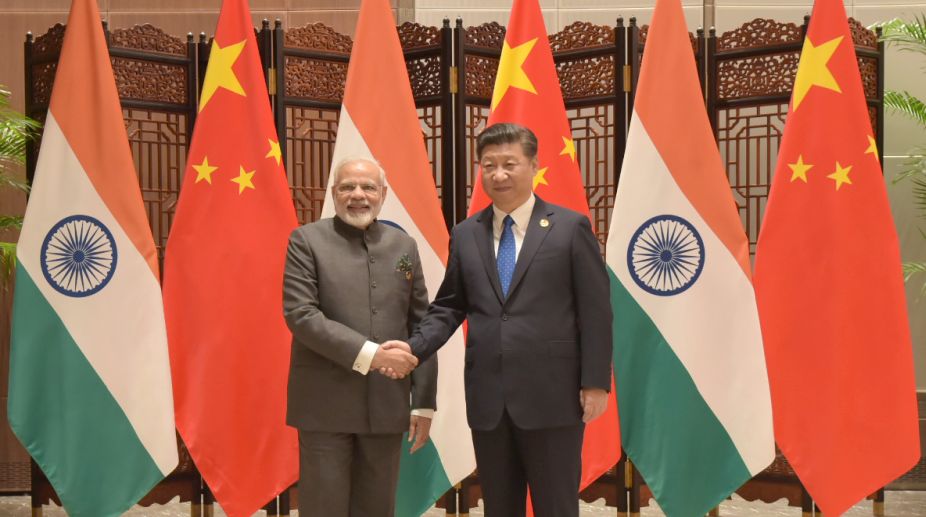Assam’s grand Jhumoir show: 8,000 performers, PM Modi to attend
Assam’s Jhumoir Binandini event on February 24 will feature over 8,000 performers showcasing the traditional Jhumoir dance at Sarusajai Stadium, Guwahati.

File Photo (Photo: PIB)
Observing recent developments between India and Nepal, one can be convinced that China is doing everything it can to pacify India over its Belt and Road Initiative (BRI) in order to get the desired outcome, minus the noisy background. Thus, Indian Prime Minister Modi’s task is not simple as he juggles formal diplomatic and trade engagements with China or Nepal while trying to actively deal with the idea that is trilateralism.
The region will have a better chance to live up to its actual potential if it maintains well-channelised diplomatic and trade negotiations. In any case, Nepal’s best interest will be served by leveraging both India and China and improving its much-needed infrastructural capabilities and cross-border connectivity, reducing the limitations of being land-linked.
Advertisement
Political scientists look upon trilateralism that involves triangular relations between unequal powers as an impossibility. Economists look upon it as a straight line or corridor spanning geographical borders in order to gain from the opportunities arising from differential resource endowments and fiscal differentials. How does one explain the movement of once-imperialist Japan’s labour-intensive manufactures, called Flying Geese, to Korea and Taiwan, and later to China and Southeast Asia? Also, it is misguided to think that small powers wish equal status in political terms as long as the economic benefits are mutual and, ideally, equitable.
Advertisement
To create a way forward, economic corridors are perfect physical components for sub-regional cooperation through devolution of responsibility and authority to local bodies and communities. They need seamless connectivity by road, railway, waterway, airway and grids. But, importantly, the markets must be integrated and supported by financial cooperation by local governments and banks, with risks judicially shared by all the central governments.
Economic corridors must seek integration of sub-regions through value additions and supply chain innovations. As of now, five possible economic corridors are possible in Nepal. They are Karnali Economic Corridor, which can integrate the far western region of Nepal with Tibet, Kumaon, North UP (Lucknow growth axis); Gandhak Economic Corridor, which can integrate the western region of Nepal with Tibet, North UP (Gorakhpur axis); Bagmati Economic Corridor, which can integrate the central region of Nepal with Tibet and Bihar (Patna growth axis) and Koshi Economic Corridor which can integrate the eastern region of Nepal with Tibet, Sikkim, Darjeeling and Dooars (Siliguri growth axis). The fifth project of strategic significance for the Greater Himalayan Region is the construction of the Mid-Hills Highway in Nepal with due emphasis on 10 model town development projects that serve as growth centres.
To look ahead, it is prudent to remember that Nepal prospered, until the advent of the East India Company in the sub-continent, as an economic corridor and a civilisational bridge between adjoining northern India and Tibet. Following Nepal’s calamitous loss in the Anglo-Gorkha War of 1814-16, it was territorially reduced in size by around 33 per cent and its prevalent national geo-psychology changed from that emerging Himalayan empire aspiring to become an economic and cultural bridge between India and China to simply a ‘yam between two boulders’. Subsequently, it sought to look inward and close its doors to the outside world.
To initiate the perceptional change benefitting the economic and strategic fundamentals in the region, the idea of a Trans-Himalayan Economic Corridor (THEC) centred on Nepal should be pursued seriously. It is based on the firm belief that a THEC can profoundly transform the entire south-eastern Himalayan sub-region and the Ganges Basin, where most of the world’s absolute poor and deprived population now live. The south-eastern Himalayan sub-region and the Ganges Basin need a big push in infrastructure investments coupled with far more robust annual economic growth rates in order to meet the challenges posed by poverty, mass unemployment and massive underemployment of its human capital.
Amid the development and security challenges faced by the Himalayan sub-region, the emergence of Asia as a world economic fulcrum, powered by both China and India, offers grand opportunities to deal with these challenges. But for that to happen, there needs to be seamless implementation and consistency.
An added dampening factor is the politicisation of civil society. This is not only a Nepal-specific problem today, but one that plagues various democracies, where political parties have ceased to keep an internal democratic culture. This pattern is surely against the foundational idea and principles of democracy which clearly supports the freedom of institutions, including the judiciary and the press. Under the compromised state system, the rise of political fringe actors and the decline of rational voices are the hallmark of the post-truth age.
Alas, Nepal is not an exception and this vicious global trend continues to grip its state apparatus. Irrespective of the challenges on its home turf, Nepal has to overcome them and move forward to claim its vital stake in the region. While delving into the idea of trilateralism, it’s important to understand that India-Nepal relations are multi-layered and formed through favourable socio-cultural and strategic fundamentals. Historically and in continuance, the cornerstones of bilateral diplomatic and trade relations have had strong consideration of the strong people-to-people ties, friendly cross-border connectivity and prospects of close economic cooperation. Hence, to further deepen the ties, it is essential that bilateral relations are supported through trilateralism in certain spheres. This is the time to move positively.
(The writers are, respectively, a former finance minister of Nepal and an economist, and a New Delhi-based columnist.)
The Kathmandu Post/ANN.
Advertisement